Review of R.W. Fassbinder Collection - 1969-1972
Introduction
Fassbinder is maybe the coolest of all the German auteurs, adored in the US in particular where major exhibitions and events have been held in his honour. Although spiritually this is pure art house, in the same vein as Godard or Warhol, Fassbinder`s work is fastidiously planned and executed. It`s relatively easy to watch, despite its explorations of some fairly tough terrain. Throughout, there is a depressing existentialist sense of hopelessness and an often claustrophobic lethargy that shows his characters stuck in a rut, where there is little point in changing anything.
In the few brief years of his career he was remarkably prolific. Though finance was a constant problem, every penny he made or encouraged others to give went into his work. He was a complex and gifted character, openly gay and yet also married for a time to one of his leading ladies. His cast adored and hated him in equal measure, athough (according to some of the interviews in this set) they all have a residing respect for his work and his vision.
He initially started his own theatre group in Bavaria where he wrote, produced, directed and acted; a pattern he would continue with his film-making. The influence that theatre had on his film-making is often evident, with much of the action taking place in carefully composed long, wide shots with little editing. As luck would have it, this preference was also a practical blessing meaning that he shot economically, rarely wasting money on superfluous film stock. In other words, he achieved an amazing bang for the buck.
A self-destructive character, he died in 1982 of a drugs overdose at the tender age of 37, having turned in some 40 films, as well as a TV series - all created in just over a decade.
Whilst Fassbinder naturally gets compared to other independent European film-makers (Godard in particular), he has a very distinctive style of his own which really emerges across this 9 movie set.
There`s a dispassionate hopelessness, verging on brutality in these early films, which reflect dysfunctional relationships and a depressing sense of ennui.
There`s also a depressing level of coldness and violence in some of these pictures which many viewers will find distasteful. Yet when we see men hit their girlfriends or wives or demand sex without a hint of tenderness we don`t see merely brutish misogynists, but rather pathetic and disconnected individuals with little to live for.
Fassbinder himself had a curious relationship with his mother and was brought up in a red-light district, friend to the down-trodden and witness to a crueller side of life where any hope of optimism was crushed by the unforgiving harshness and reality of everyday life.
These influences are clearly noticeable in this collection, though If this all sounds like hard-work, or complex and pretentious then it really isn`t. Fassbinder is frighteningly literal, rarely, if ever, relying on complex metaphor or Genet-like poetics. It`s actually really watchable stuff that doesn`t demand too much of the grey matter.
So what do you get for your money with this first set, covering Fassbinder`s most significant output from 1969 through to 1973? . There are nine films, mostly presented in bare-bone form on single-layer discs, though there are a few extras on a couple of the discs that provide some good back-ground.
So here`s the run-down.
LOVE IS COLDER THAN DEATH (1969)
Fassbinder`s first-film is, in my opinion, truly remarkable. The framing and composition throughout has been carefully considered, betraying a highly developed theatrical design sensibility, and despite its age, it looks remarkably cool today. (There are some shots that could be stills from Pulp-Fiction). It`s been economically shot, probably on 16mm, and the acting and setting throughout betrays a disciplined approach to the work that is often absent in independent film-making. Strangely, though this film has a strange detached callousness (rather like `A Clockwork Orange`) it wears its influences clearly on its sleeve. French Director Rohmer even gets a mention in the opening credits as well as providing a name for a central character in the film - Erika Rohmer, and the pace of the action is very akin to Rohmer`s..
It could be argued that this brilliantly named piece also borrows heavily from B-movie noir and there is something of the gangster buddy movie about this film. But there`s also a very strange sense of detached brutality and stark coldness, where violent action is played out without fanfare, as a matter of course. Fassbinder plays one of the key roles himself, and though critics sometimes dismiss this as Fassbinder merely finding his own style and voice, for me this was one of the finest outings in the set.
KATZELMACHER (1969)
This second outing for Fassbinder`s favoured collective of actors (including himself) lets itself down with a dull and sparkly transfer. This may be partly down to the available print but after the thrill of seeing the first film in the set looking so fresh, this was something of a disappointment. It`s also let down by poor quality sub-titling which often breaks up making it tough to read on occasion. Its audio is also inferior to the first movie and betrays the rush that went into getting the film out - apparently all shot in the space of a single week. Having said that, it is still an incredibly powerful film, reflecting the pointlessness of existence in a poor German suburb. Based on one of Fassbinder`s own plays, all the youngsters in it are bored and uninspired. Sex and alcohol seem to bring the only relief to this agonising existence, and even then it`s portrayed as unemotional and utilitarian. It`s a film filled with long silences and deep sighs, never in a hurry to make a point. The status quo of their dreary existence is thrown with the arrival of a Greek -played by Fassbinder himself. (The German phrase `Katzelmacher` is a derogatory one meaning `undesirable immigrant worker`). When he lodges with one of the couples in the housing estate that is featured throughout, the ennui and lethargy of the others turns into a brooding and violent racism. The film isn`t without humour and, though it`s hard to laugh at some of the disgraceful violence in the film, some of the small-minded bitchiness, as well as the one-upmanship that is evident throughout might raise a wry smile.
GODS OF THE PLAGUE (1970)
This film actually seems to follow on from `Love is Colder than Death` with many of the same characters, though don`t expect any logical continuity. (For this reason, it is often referred to as Part 2 of the Franz Walsch trilogy)
Franz comes out of prison literally as a `new man`, played by a different actor than in the first movie. He tracks down his favourite squeeze, Joanna (who is the same person / actress), but soon leaves her for Margerethe, and together with an old chum they rob a supermarket. The movie, taken on its own merits, would be acceptable enough but it just doesn`t have the cold and unemotional atmosphere of `Love` and as a consequence fails to hold the attention in quite the same way.
THE AMERICAN SOLDIER (1970)
This is seen as the third part of the Walsch trilogy and has many of the same actors and characters as the previous two. This time we get a Vietnam vet, Ricky, who teams up with Franz Walsch (Fassbinder again) to form a dynamic duo of hoods. Ricky is a hard-drinking American who treats his women mean and takes out local gangsters for some crooked cops. There is a dark and queasy undercurrent to the movie though unlike `Love` it all feels a little contrived and it`s unclear whether what unfolds is intended as parody or homage. Sadly it fails at both possibilities.
THE NIKLAHAUSEN JOURNEY (1970)
This is one of the least satisfying films in the set principally because it feels like hard-work to watch. There`s a loose attempt at some faux politics and the whole thing seems to be struggling to work like Godard`s `Tout Va Bien` mixing revolutionary rhetoric with exposure to the actual process of making the film itself. Unlike Godard, who seemed sympathetic in part to the radicals in his pictures, Fassbinder is being extremely critical of them here, drawing clear parallels between organised religion and prescriptive radicalism. There`s also more than a nod towards the German extremism that created Hitler. Though it`s a neatly realised film, it`s also extremely dull compared to the strange, almost surrealistic thrill of much of his other work.
RIO DAS MORTES (1971)
`Rio` is a very different kettle of fish to Fassbinder`s previous outing. It`s a `back to basics` production exploring the strange relationships played out between men and women. Hanna has been with boyfriend Michel for an age and thinks it`s time for him to commit to the relationship and get married.
Michel, on the other hand, fancies an adventurous rip to Peru with his buddy, Gunther. It becomes clear that the trip is really just escapist fantasy as neither men have any notion of what they might find in Peru and certainly don`t have the wherewithal to make it happen. A seemingly random idea for the plot of a movie and yet so perfectly capturing the essential differences between the sexes, it betrays a slightly lighter side to Fassbinder and is a real pleasurable watch.
BEWARE OF A HOLY WHORE (1971)
In common with so many film-makers, the process of film-making is seen as irresistible and `Beware` is a film about making films. But that`s just surface matter. The film is, once again, about the desperate failures of people to get on and have functional relationships. A large international cast are left in stasis waiting for the arrival of their Director. During the wait, this collective of thespian misfits turn to drink to ease the ennui and tension that has set in. When Jeff (the Director) arrives, his dictatorial and autocratic manner brings all the loathing and hatred to a head. Naturally it`s easy to identify Fassbinder himself with Jeff as a bisexual tyrant of a Director. In that sense alone it`s a darkly intriguing movie, using roving cameras to enhance the sense that this is merely documentary.
THE MERCHANT OF FOUR SEASONS (1972)
This powerful film is really a tragedy of near Thomas Hardy proportions. It`s a highly charged melodrama that sees the main protagonist systematically ground down through his relationships with various women. Once a policeman, he becomes reduced to being a Munich street peddler following an affair. We learn that his Mother has belittled him , and hic cold and critical wife continues to wear down his will to live. It`s no barrel of laughs but intensely watchable, and is curiously thought-provoking, raising questions about how destinies are created by both the decisions we make and by our relations with those around us.
THE BITTER TEARS OF PETRA VON KANT (1972)
This is perhaps one of the most remarkable film in the set, though also one of the simplest in form. It signals a return to the theatrical style of his earliest films, a real strength of Fassbinder`s, combined with a strong auto-biographical narrative. Apocryphally written during a single flight by Fassbinder and shot in just ten days, it`s a case study of a Director `in the flow`. It`s all set in a single location (and consequently very theatrical); all the action happens in Petra`s bedroom in a very claustrophobic way, somewhat like a prison movie where nobody can quite break free or get out of the way.
Petra herself, a fashion designer, appears to be completely paralysed, gripping the bars on her bed at one point like a prisoner. Though she has a glamorous life in the `real world`, she seems to be trapped in this world of her own making, filled with self-love and self-loathing too.
The film feels fairly claustrophobic too, with little or no camera movement and a gloomy palette of depressing colours.
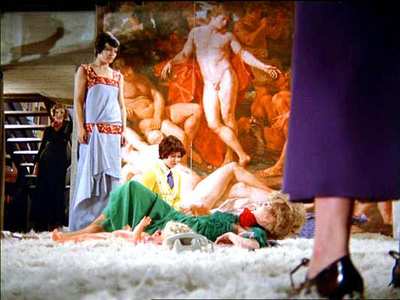
Video
Love Is Colder Than Death, shown in 1.80:1 widescreen and anamorphically enhanced, is a great transfer, though all others are shown in 1.33:1 full-screen. There`s little sign of pan and scan so maybe this reflects the format chosen by Fassbinder who certainly saw TV as an outlet for his work, Shot on 16mm, there is an evident grain to all the output though this is not unpleasant,
`Katzelmacher` really lets the side down with a really nasty transfer and subtitles that are so poor they literally break up. Apart from the odd transfer `wobble` and evident grit, grain and sparkling dust occasionally, the remaining films are all fine with the exception of `The Niklashausen Journey` which was destined for TV and maybe didn`t ever receive the tender loving care required when grading the cut. This is just a bit over-saturated with occasional softness.
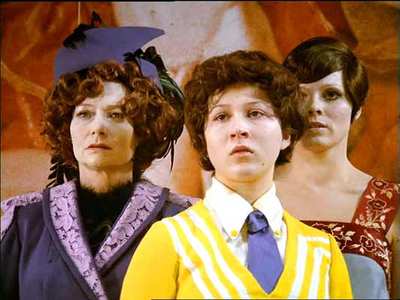
Audio
The Dolby Digital 2.0 mono tracks are fine, though some of the original sound was a little bit lively, probably as a consequence of wide-miking and booms having to move around following the action in scenes that often ran for minutes without an edit. The audio is certainly professionally recorded (unlike some `arthouse` abominations) though has little post-production work or dubbing after the event.
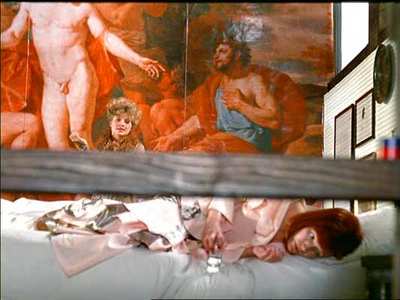
Features
ROLE GAMES : WOMEN ON FASSBINDER - THE WOMEN OF RAINER WERNER FASSBINDER (1992) (58:40mins)
Filmed on analogue video in 1992, with occasional drop-out and over saturated colours, this is principally a set of interviews with four of Fassbinder`s principal actresses (Margit Carstensen, Irm Hermann, Hanna Schygulla, Rosel Zech). It`s all shot in theatre dressing rooms, usually with the lit-mirror in shot too and during the interviews there is minimal editing and no illustrative cutaways, with the exception of the occasional `slide-show` set to music in-between interviews. A mixture of respect and admiration is tempered with an acknowledgment of Fassbinder`s darker, more controlling side. We learn that Fassbinder was not beyond .psychological bullying to get his way.
`He`d push us all to the brink of despair`
`One describes working with him like being in a dream with your eyes open`.
`He exercised an enormous attraction over women - including me`.
A particularly curious anecdote here was the fact that Fassbinder gave all the male crew ladies names. Maybe, as a borderline misogynist, it was easier to dish out the orders.
All the interviees betray a great intelligence in stark contrast to the fluffy Hollywood on-set interviews that grace the majority of releases today. The documentary divides the interview segments into chapters like `Mother`, `Men`, `Power` and `Despair`. Deep stuff!
LIFE, LOVE & CELLULOID - A JOURNEY AND A FILM RETROSPECTIVE (1:29:35) (1997)
This variable documentary form 1997 was produced in conjunction with major retrospective of Fassbinder`s work at the Museum of Modern art in New York.
It`s a down to earth documentary, splicing several commentators together with footage from the exhibition and (strangely) street scenes from New York.
There are some odd stylistic moments, like when Lawrence Kardish, Curator of Department of Film and Video at MOMA, does his interview pieces staring at a screen out of shot playing some of Fassbinder`s work, giving him a disassociated, almost zombie-like quality as he speaks.
There are many theoreticians talking about Fassbinder`s motives and vision, though these, when layered one onto the other, become slightly contradictory and confusing. The quote I liked best though was: `He was the ultimate outsider`. That made some sense to me.
It`s a real hodgepodge of material and some looks very lo-fi, particularly the live sequences and the opening titles, which look like third generation VHS.
END OF THE COMMUNE (47:17)
In contrast to the MOMA piece, Joachim von Mengershausen`s film is an intensely interesting telling of the of the origins of Fassbinder`s Antiteater (Anti-Theatre) group, and the early films that followed. The documentary follows the group through discussion groups and repose and principles. It also follows them to the 1969 Berlin Film Festival for the premiere of Fassbinder`s `Love is Colder than Death` which was very badly received by the audience at the time.
HARRY BAER INTERVIEW (40:52)
Harry Baer, actor and assistant to Fassbinder, describes his time making the movies as the "14 most exciting years of his life". He also gives some serious insight into what made Fassbinder tick and what inspired his work and vision. Very worthwhile.
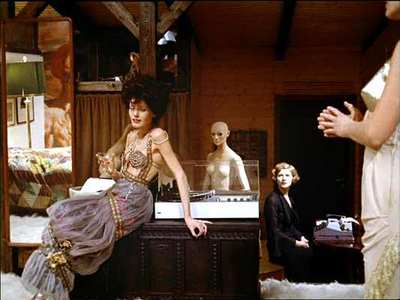
Conclusion
Fassbinder has been described by one critic as `The ultimate outsider`. Difficult to pigeon-hole, he tends to be filed in the International arthouse section alongside fellow German Director Werner Herzog and French filmmaker Jean Luc Godard.Though his films are often slow-moving, theatrical affairs, reflecting a cold, harsh and non-emotional reality, they aren`t difficult to watch and are often extremely rewarding. These are thought provoking films that you`ll probably return to again and again.
This set (the first of two from Arrow films) gathers together the cream of his early work; nine films in total, as well as some documentary extras that go some way towards making sense of this complex character and his work.
Fassbinder managed to complete some 40 films in just over a decade, before his untimely death at the tender age of 37 through a drugs overdose. Having viewed the films in this set, you can really only conclude that a cynical existential philosophy inspired his work, yet ultimately destroyed him too.
There`s a nice quote from Fassbinder in one of the documentaries that goes some way to reflecting Fassbinder`s world vision:
"We just stand around, the makers of values. That`s what we`re here for. We are unable to accept the opposite of what exists. We are therefore nowhere near achieving freedom. It is idiotic. We shall never be free if we don`t accept destruction as we accept the numbing order of the solar system. If the certainty of having to die was made physical at an earlier point of time, man would be free of existential pain, hatred, envy, jealousy".
The films in this set all seem to reflect that sentiment to some degree.
Though the transfers are variable, I would posit that The Rainer Werner Fassbinder Commemorative Collection Volume 1 is a very worthwhile purchase for anyone interested in the man and his work. Great stuff!
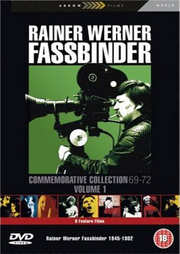




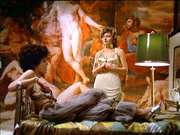

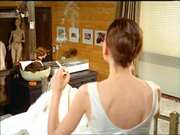
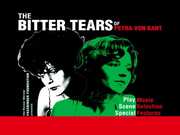
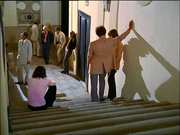

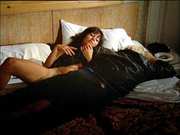

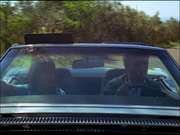
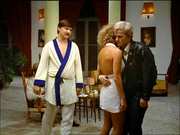

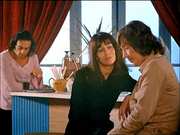
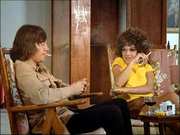
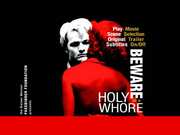
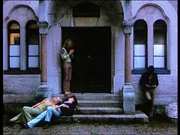
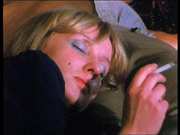
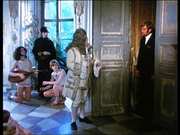
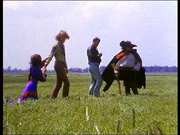
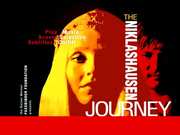
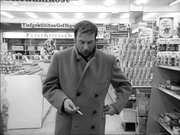
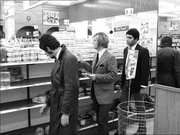
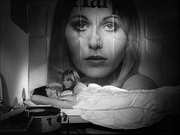

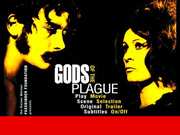

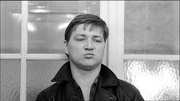
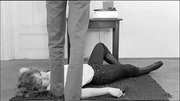
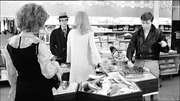
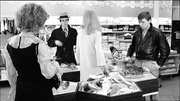

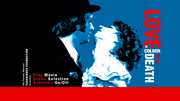
































Your Opinions and Comments
Be the first to post a comment!